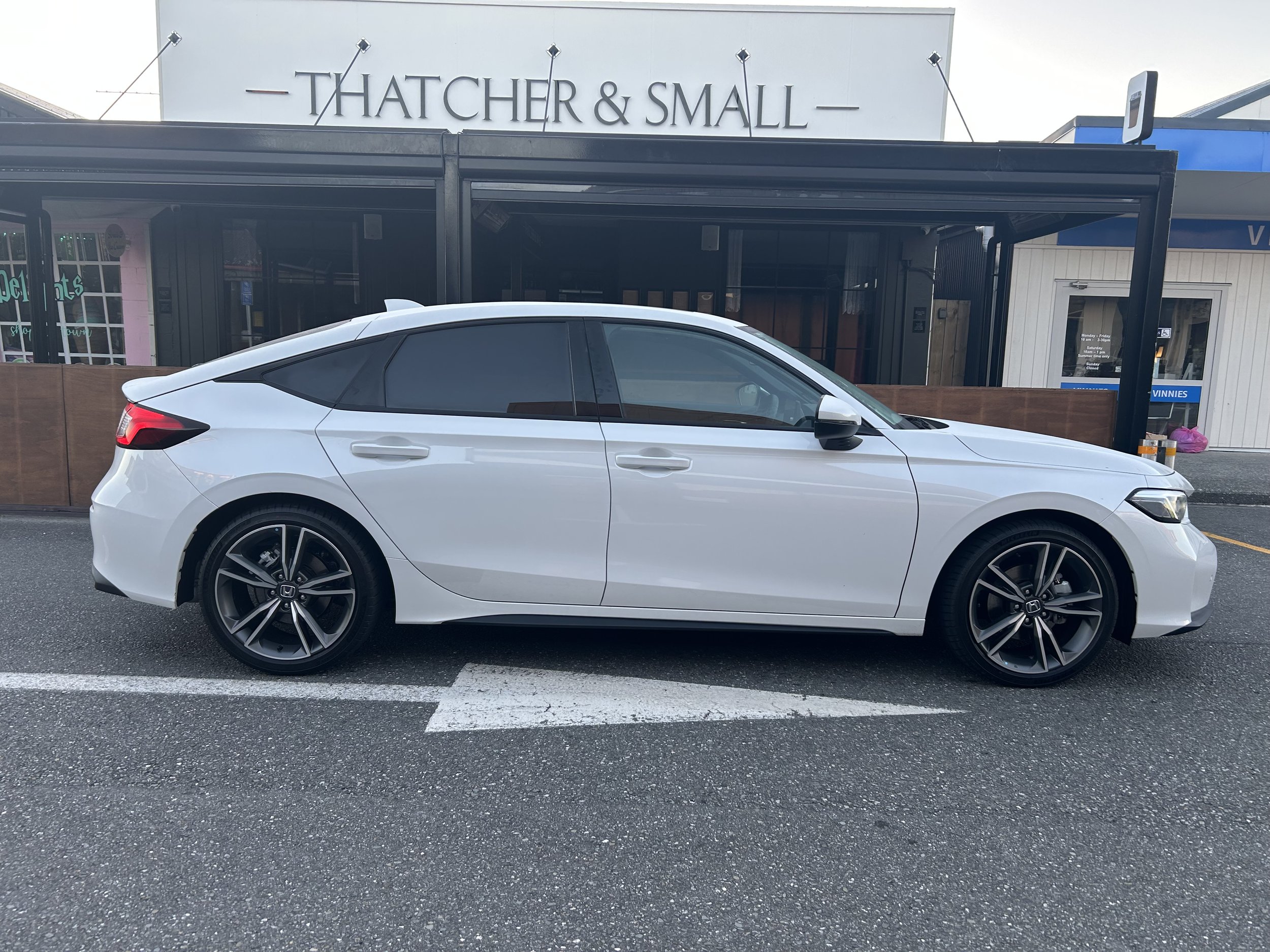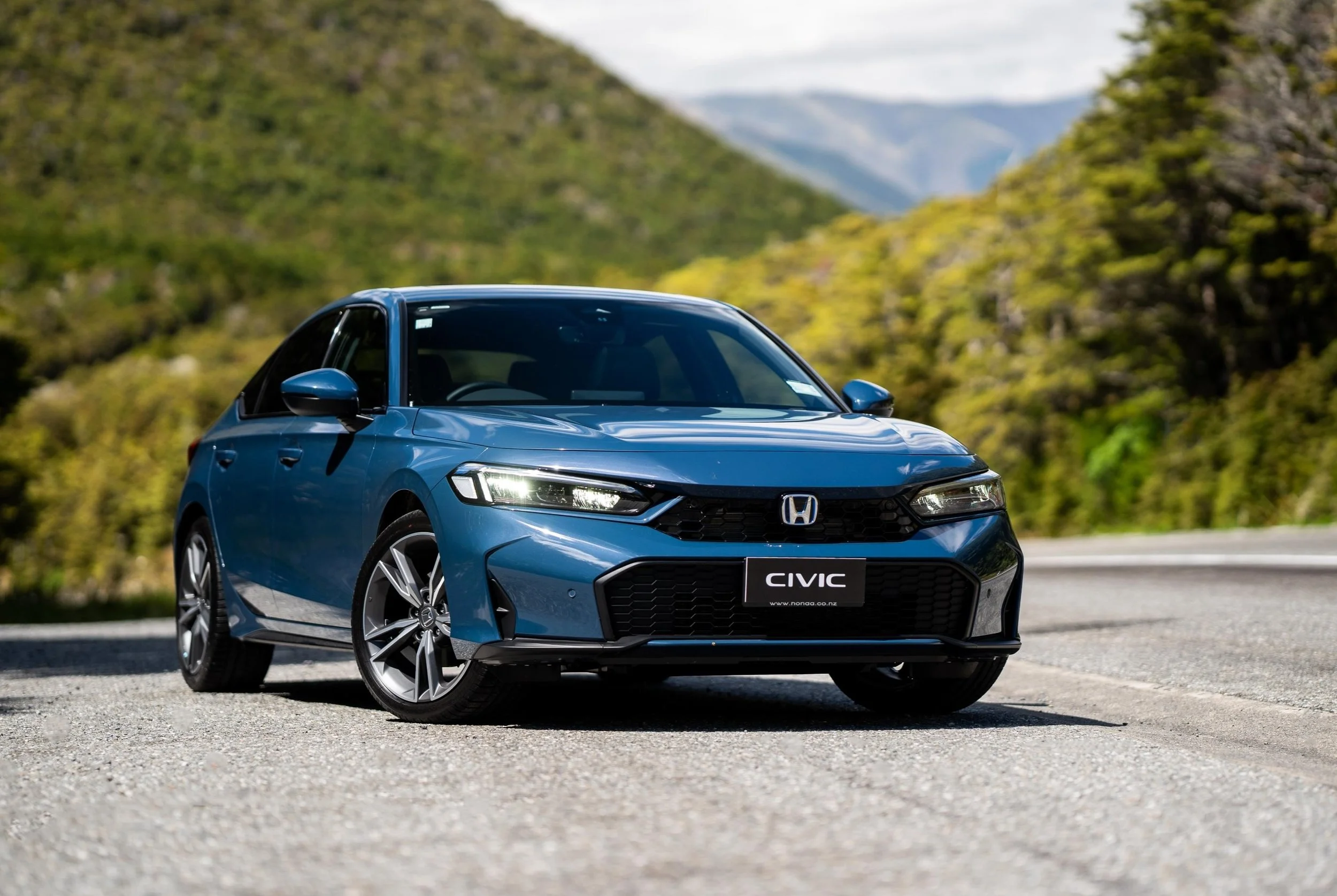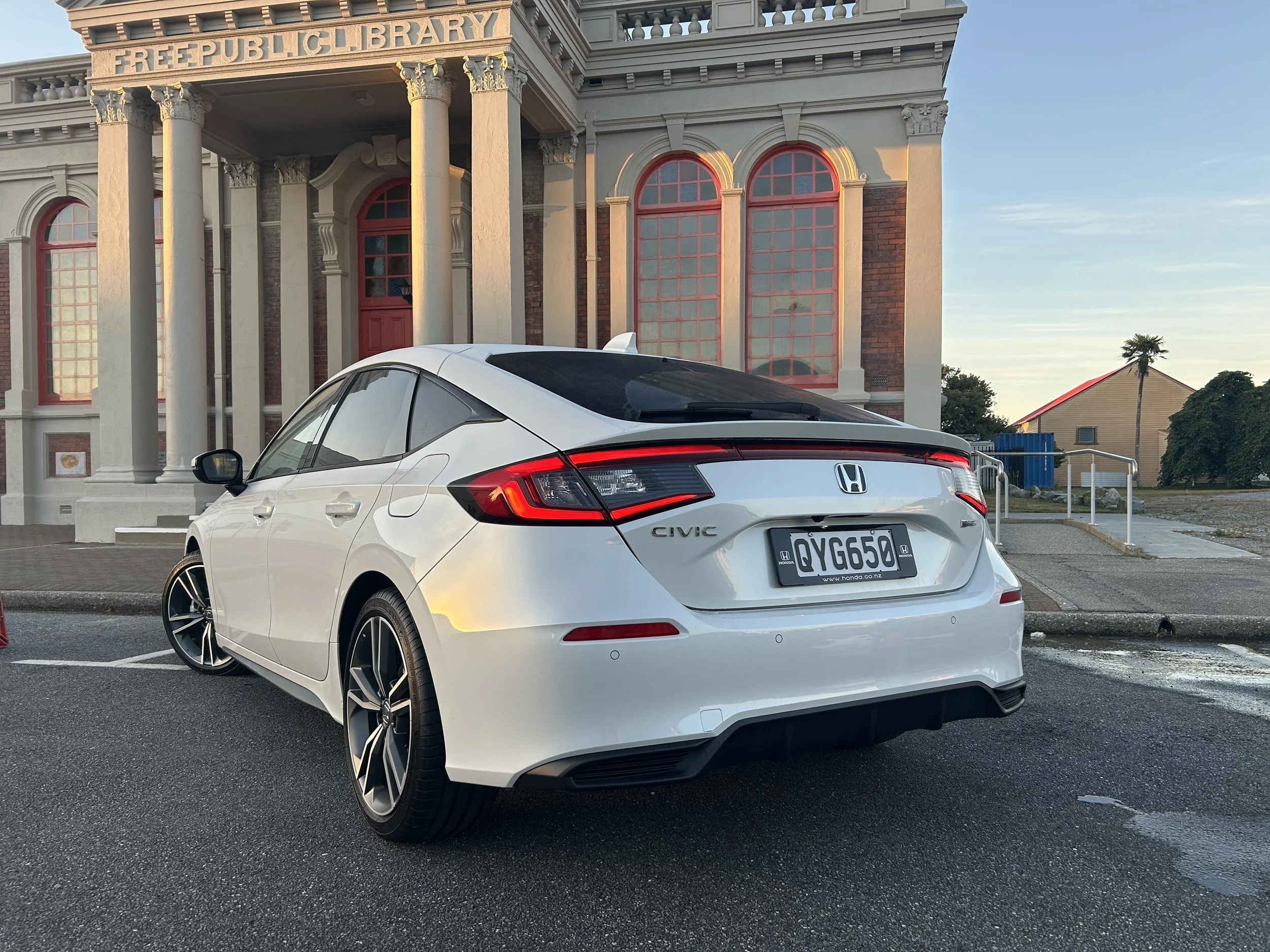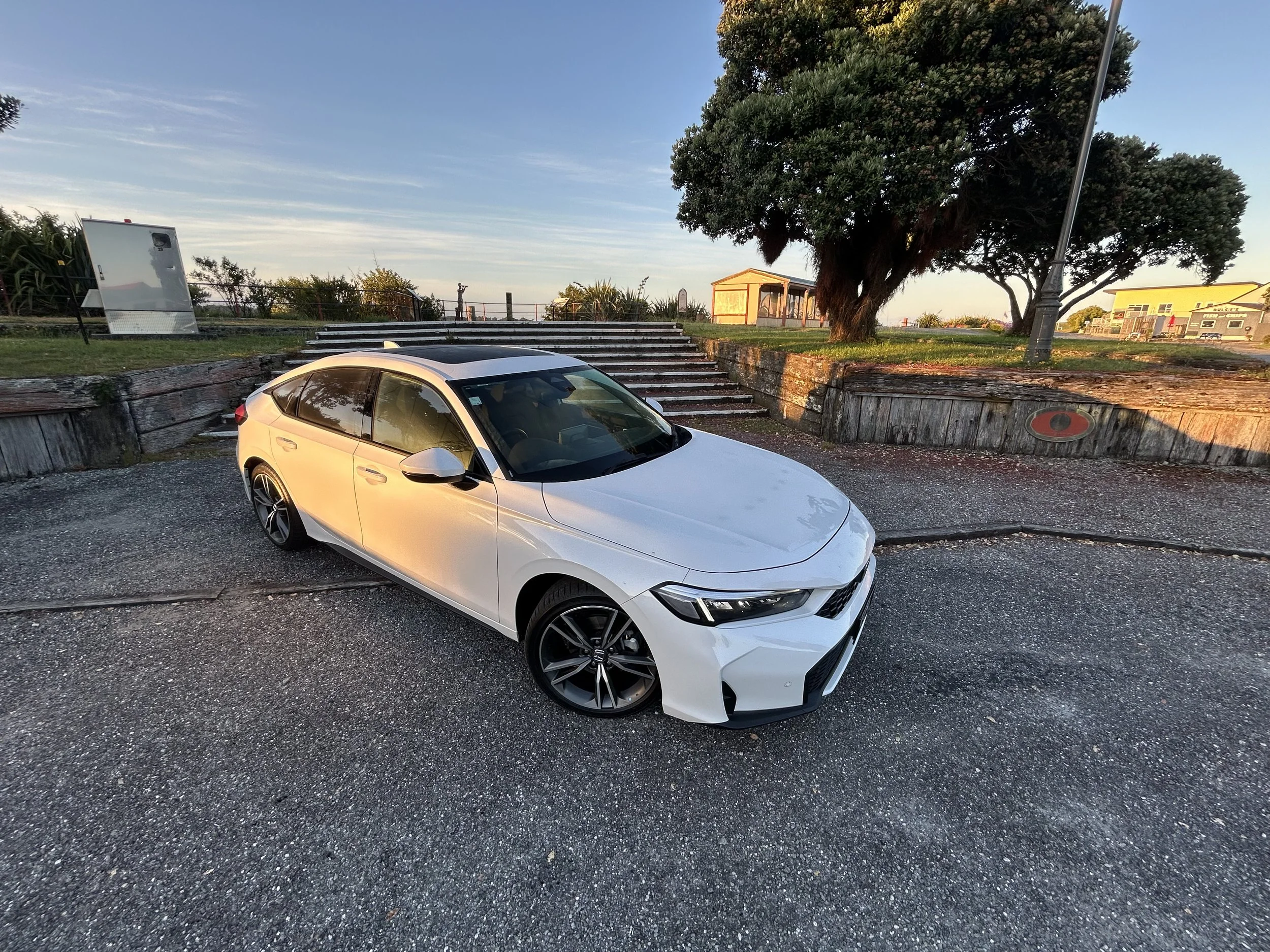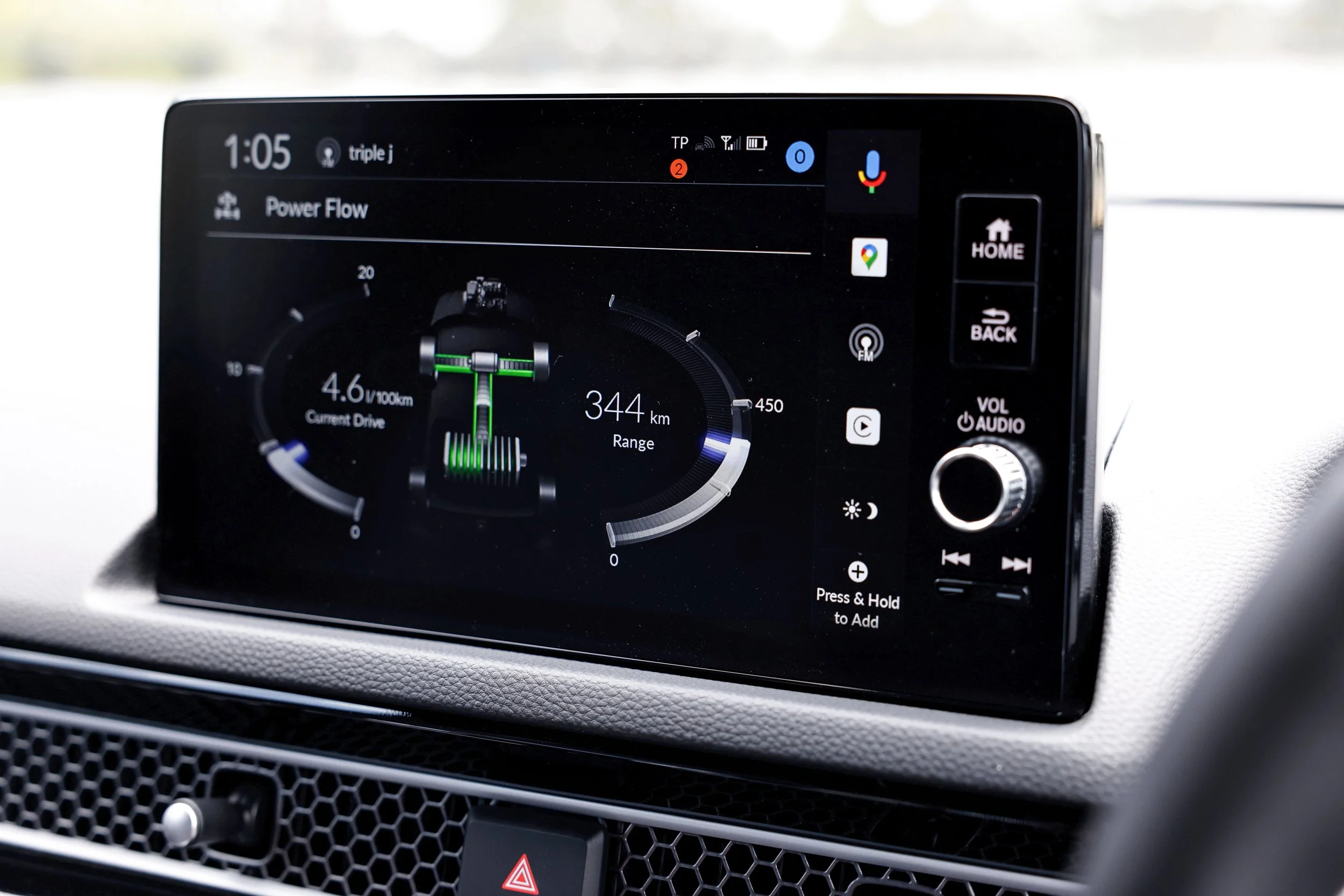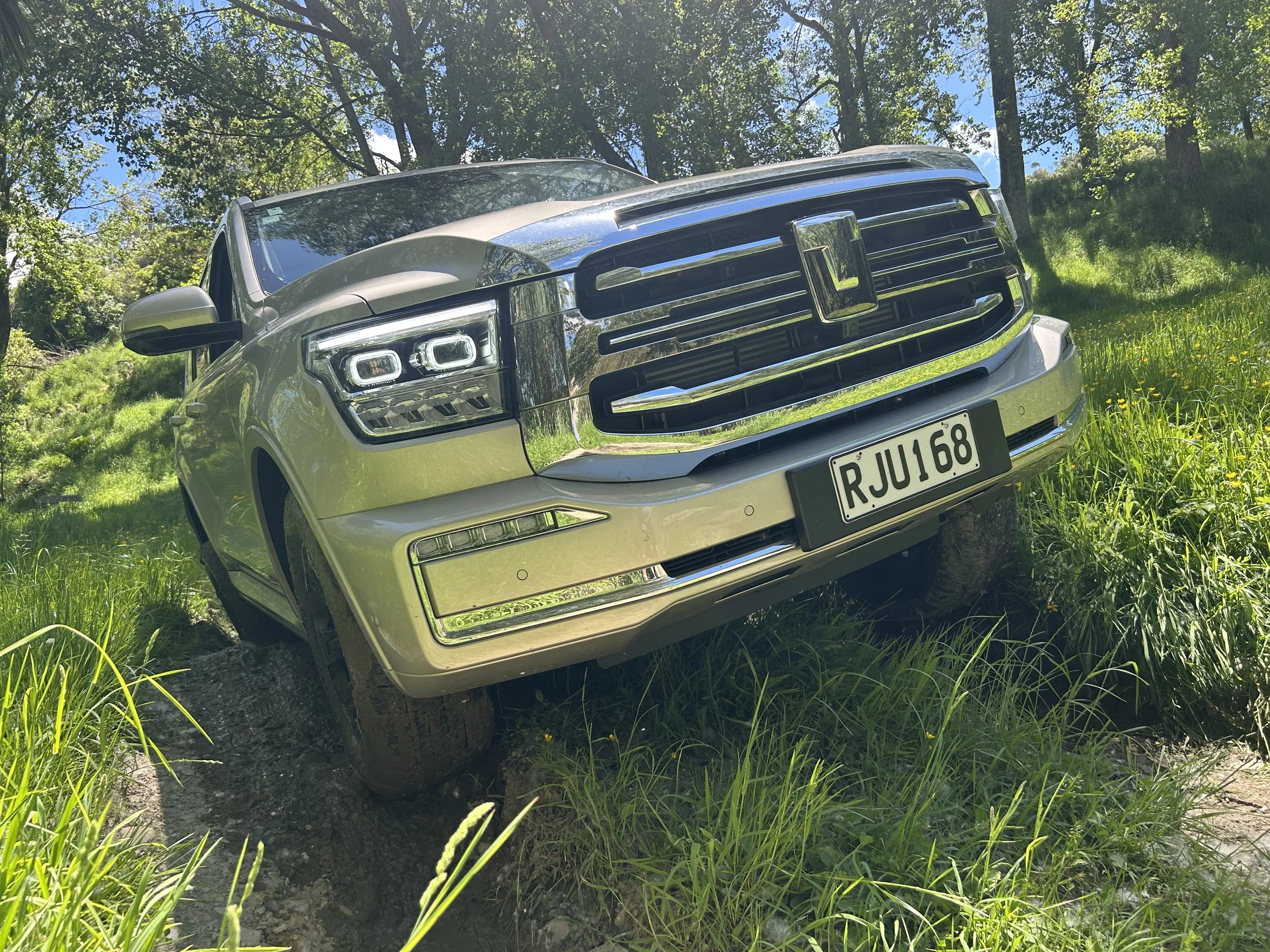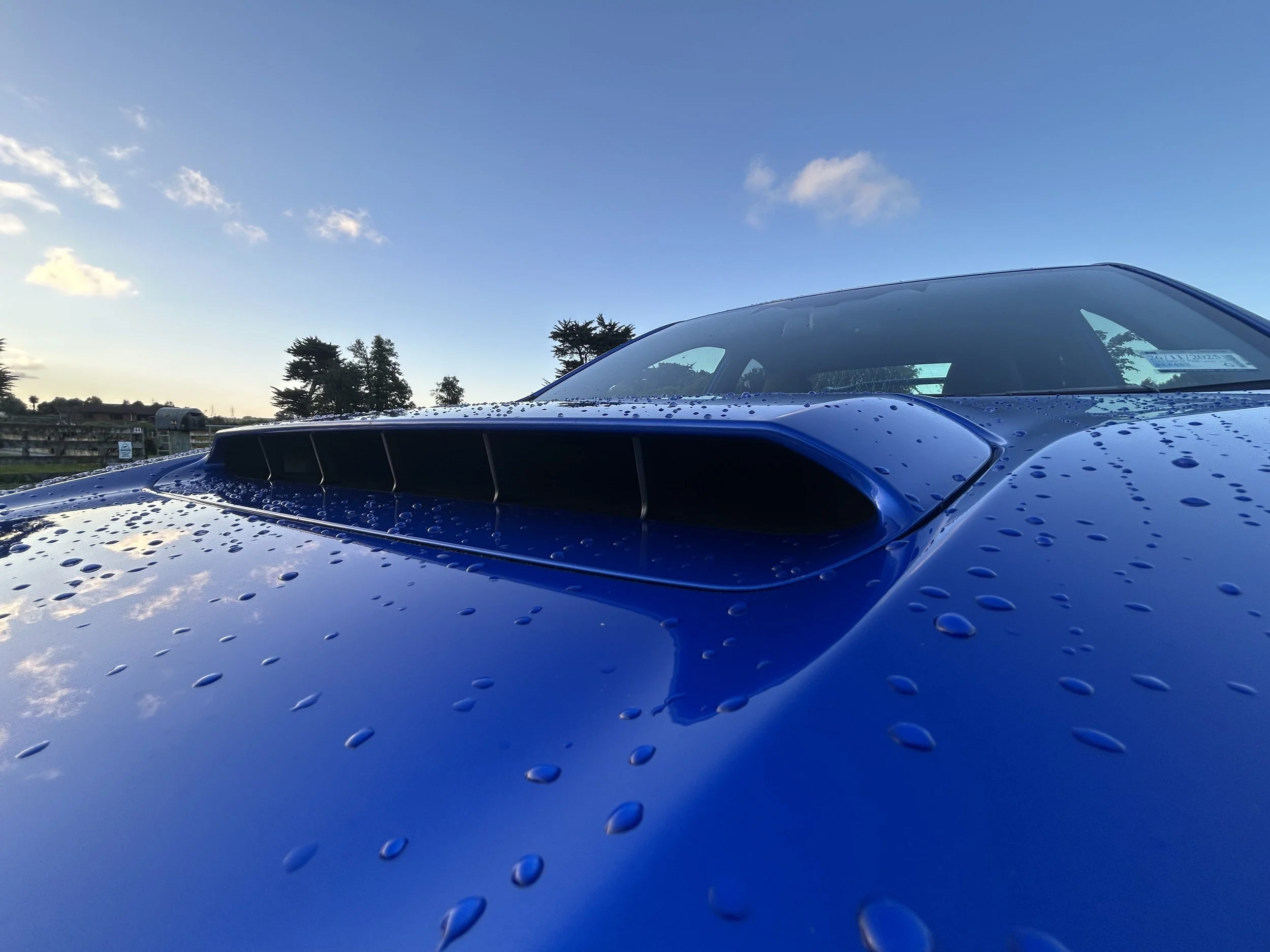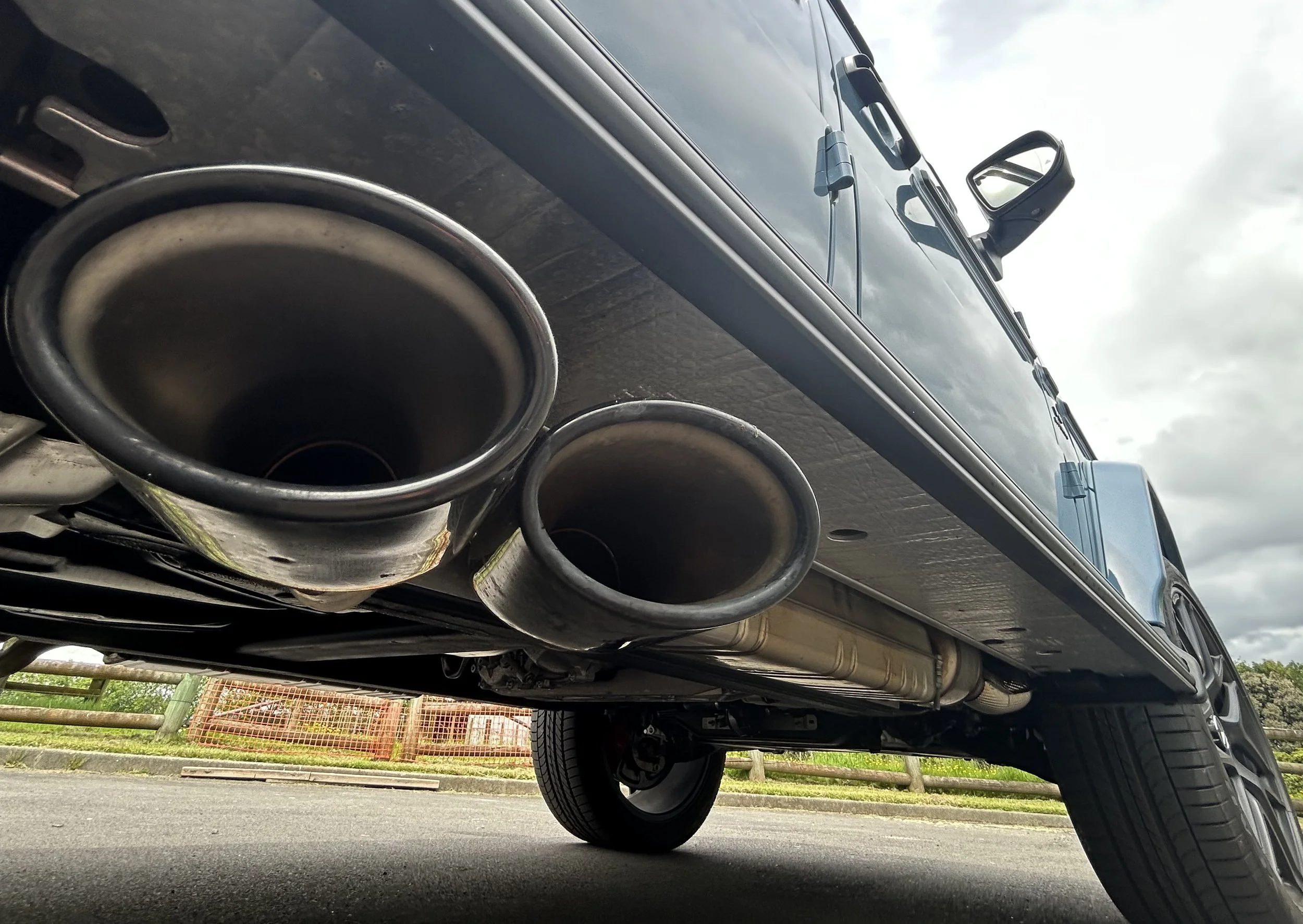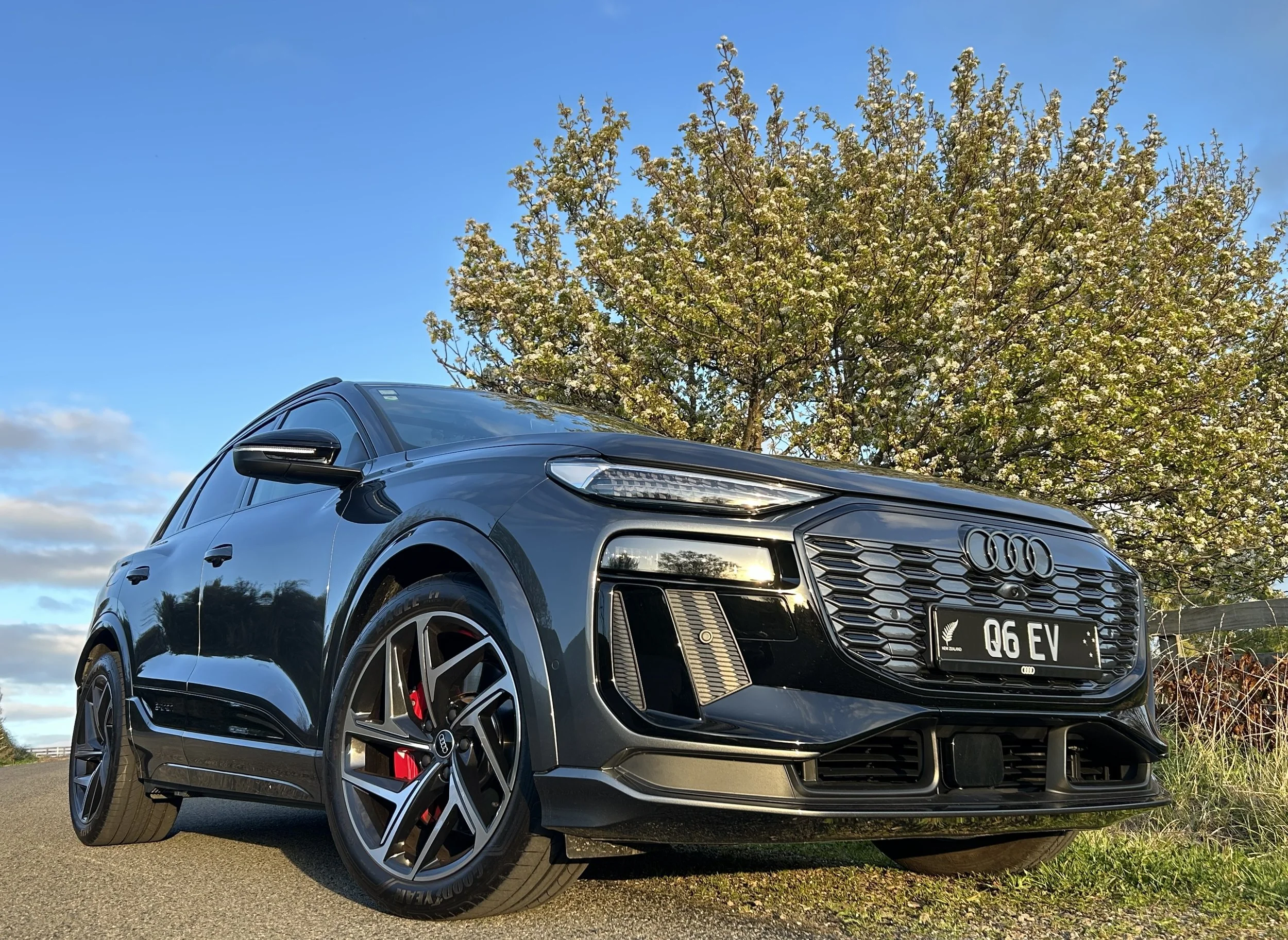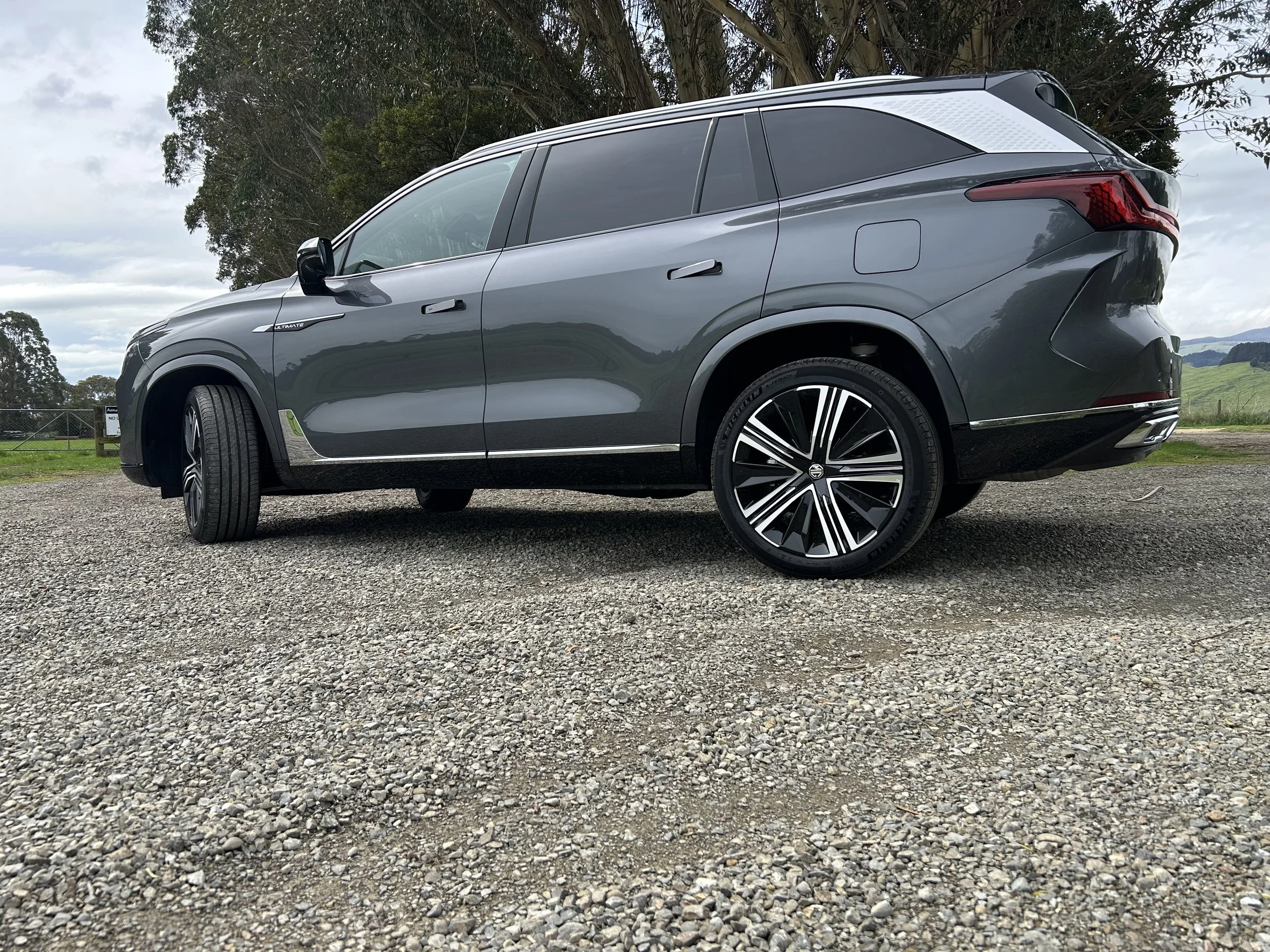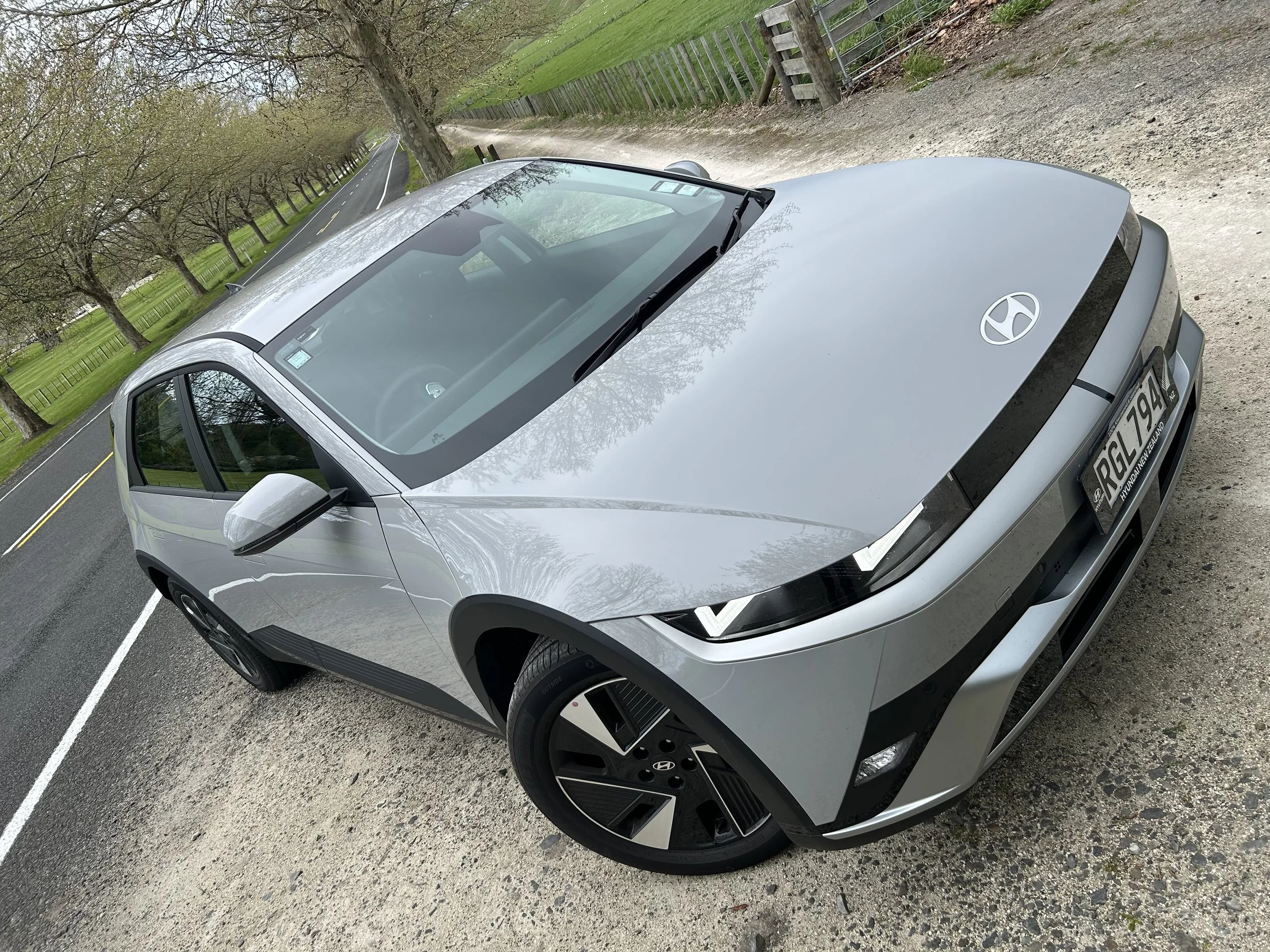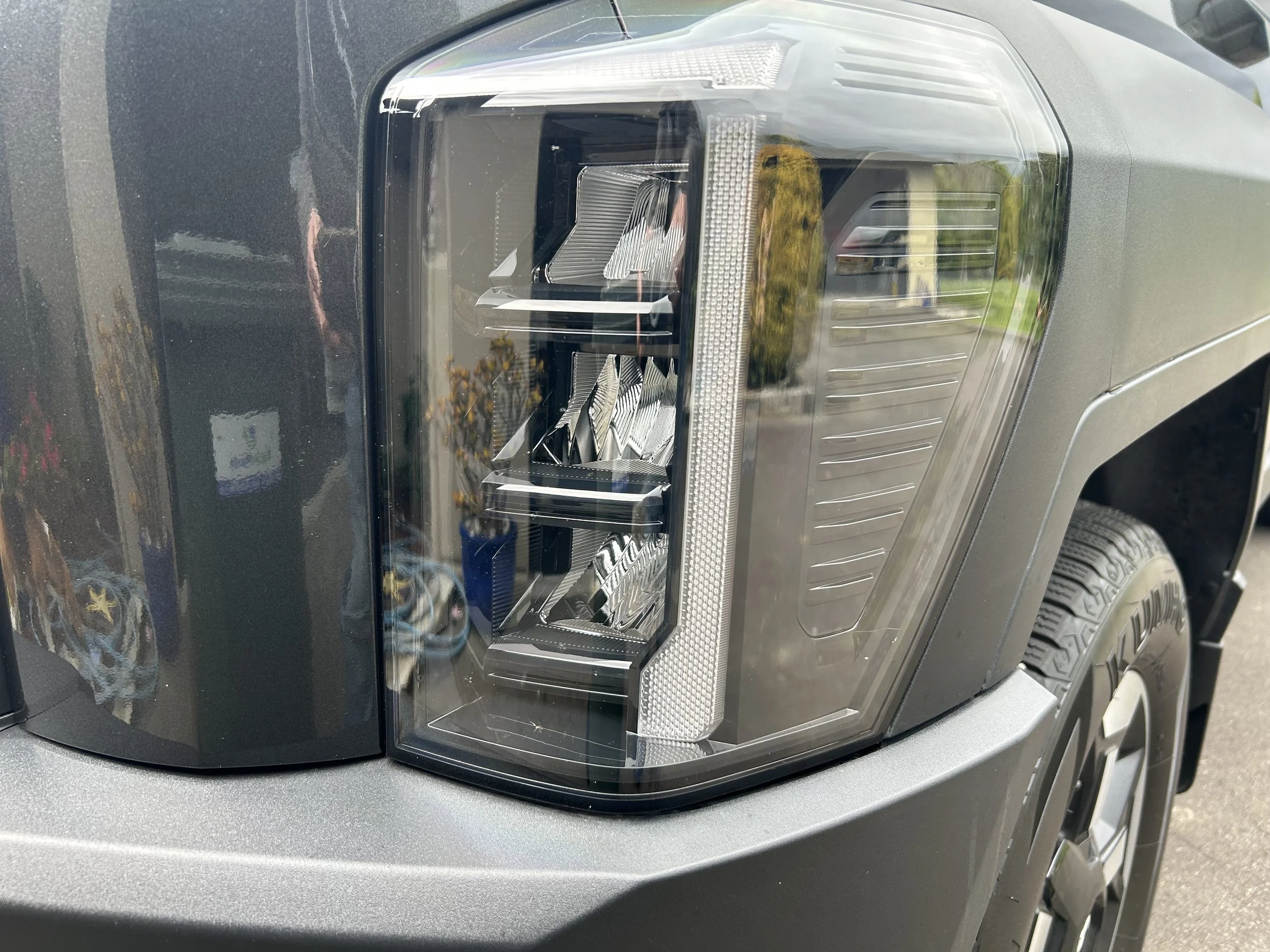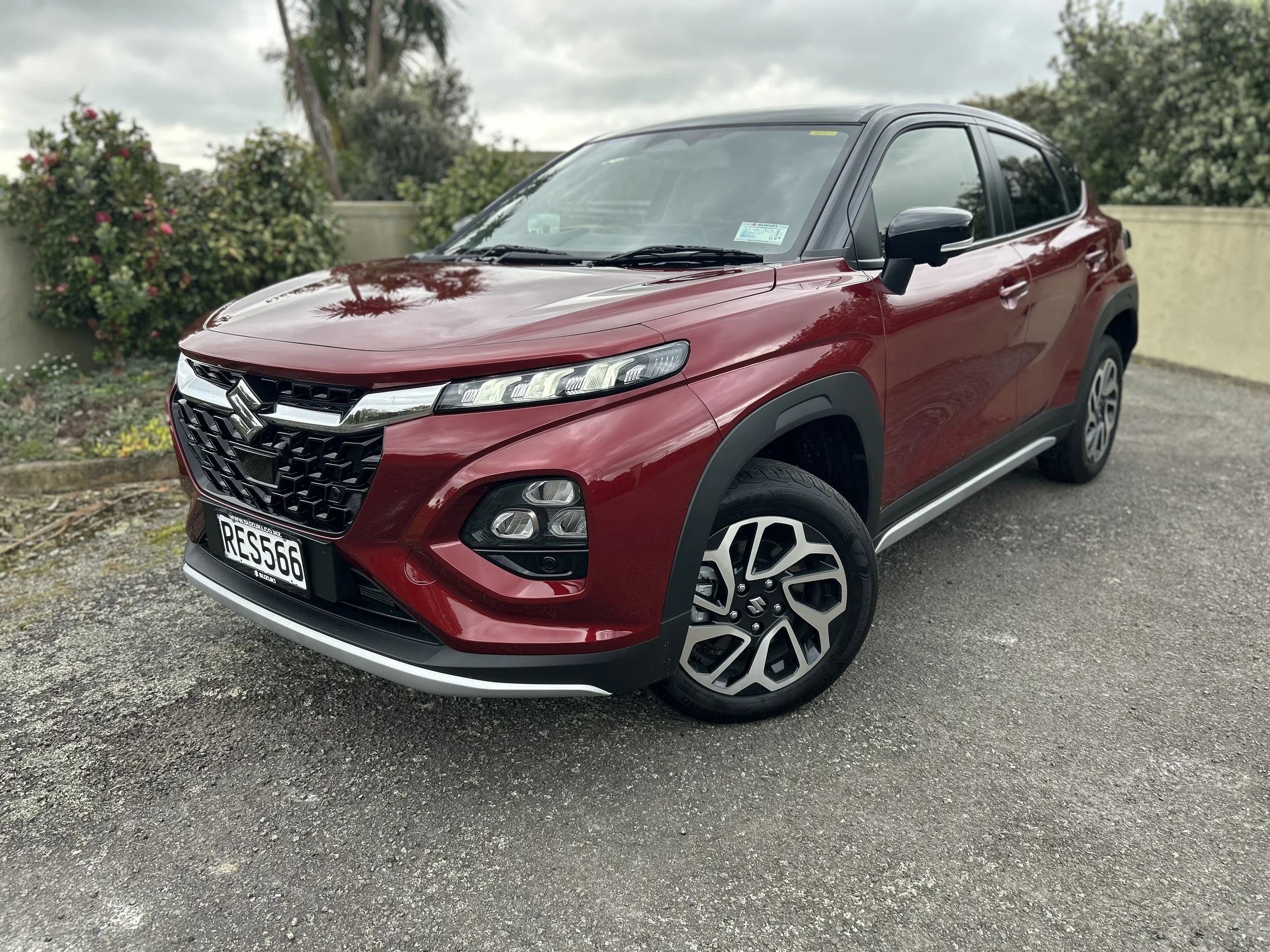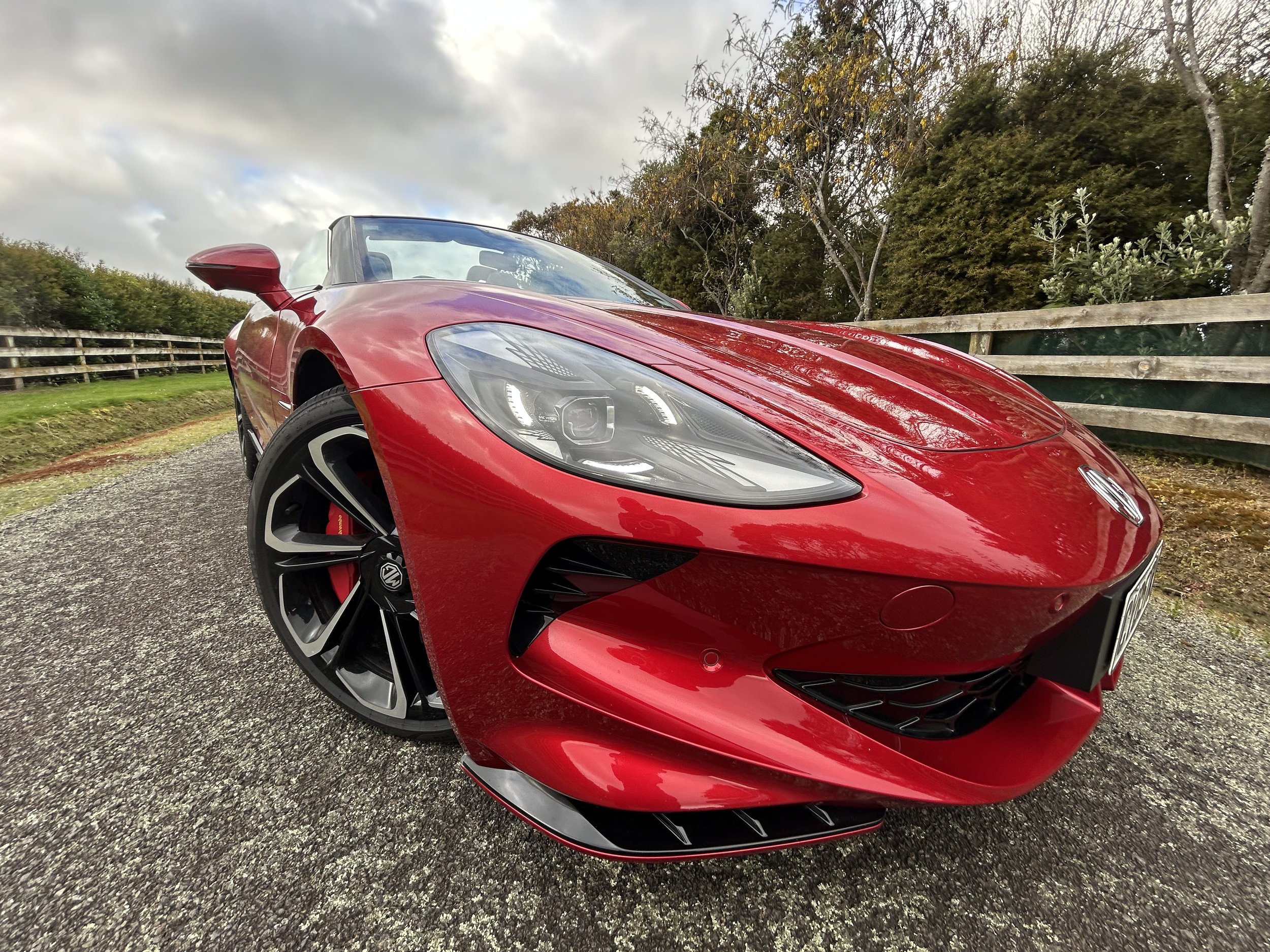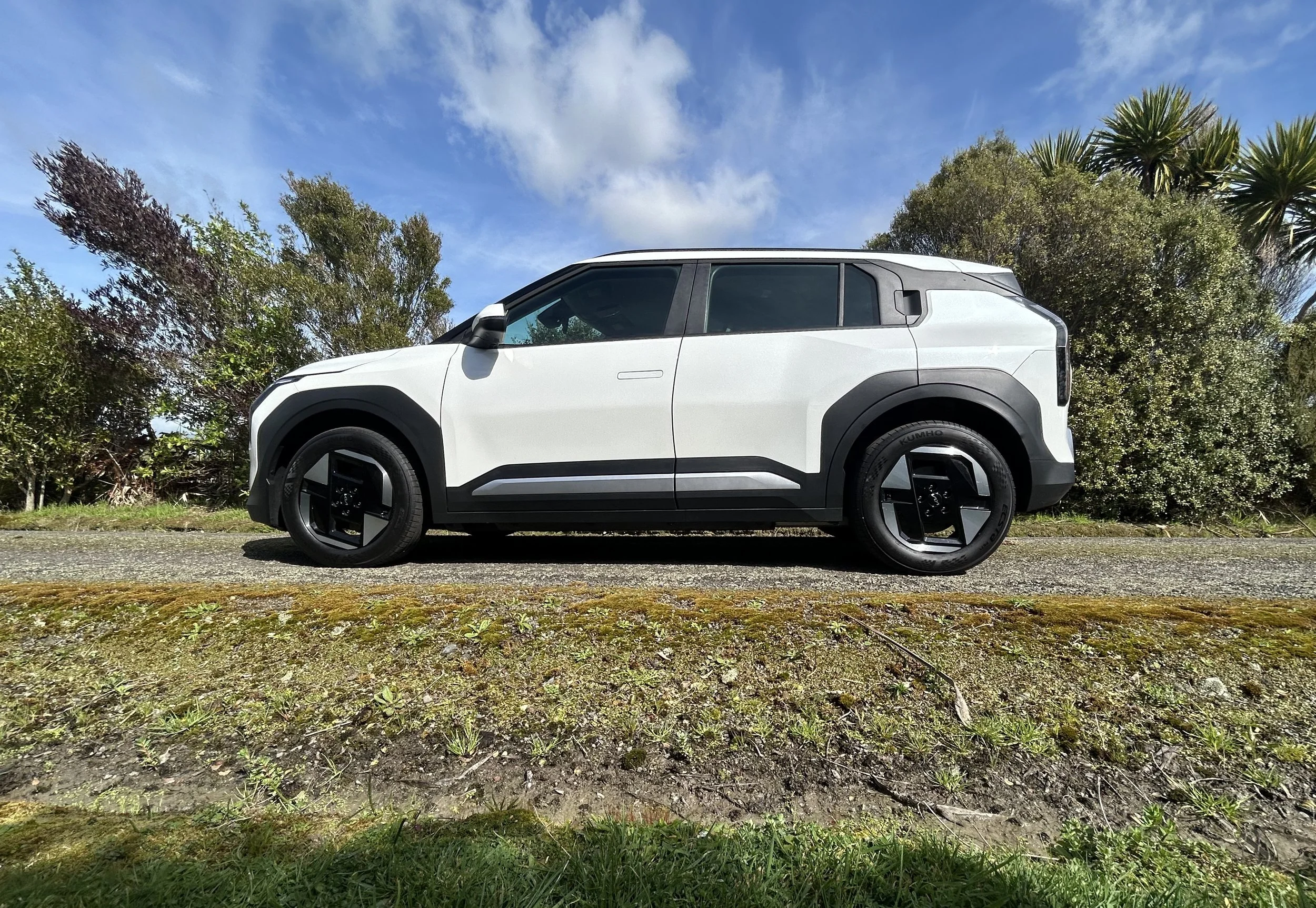Honda Civic SR hybrid hatch first drive: Posher push with parsimony
/The mid-life update to this slinky low-profile model brings it into the hybrid era, with the usual benefits.
NELSON to Hokitika is a haul - but the stunning landscapes and fantastic roads make hours pass like minutes.
State Highway 6 into rugged hinterland, over Hope Saddle and Spooners range. Go right through the narrow and very twisty Buller Gorge - which is still operating under stop/go areas in several places - and past the swing bridge. Chase the river, with more one-laned sections, to the sea at Westport, head left, hugging the coast through Punakaiki and an hour and a bit further to your destination.
Such immersive driving before stopping for early afternoon lunch at Berlins - a whitebait fitter sandwich seemed the ‘right’ choice - and even better afterward. Nip and tucking around those sinuous bends, cautiously tackling Hawks Crag, carved out of a overhanging rock face, then out to oceanside and onto what has been lauded by one famous travel guide as one of the top coastal drives in the world.
Perfect for the reincarnated Prelude, the sports coupe Honda has decided to return to life after 24 years on the shelf.
Sorry, Prelude? Well, yes, I’m obviously getting ahead of myself.
The coupe for now is still unborn; and will remain so until year end, with Kiwi capture not until some time in 2026.
Driven today is a potential taste of yet-to-be-tried talent, but in another shape.
The Civic hatch is clearly a different car, yet at DNA level, it and Prelude are set to be at least kissing cousin close, all the moreso as result of a refresh we’re trying now.
How does a Civic that’s undergone a big refresh two years on from initial launch tie to Prelude? Quite closely, actually. Same platform, fundamentally the same twin electric motor-assisting 2.0-litre petrol drivetrain that supplants a now-retired 1.5-litre turbo. You’d presume Prelude will have more snap, that its suspension tune will be sharper. And, of course, it debuts a simulated gear shift for the shared constantly variable transmission.
Those details will matter. Prelude will assuredly be more flavoursome. At same token, the recipe as now delivers with this Civic update is impressively tasty in its own right; it feels settled and easily controlled, nicely balanced with an air of assertive confidence.
In some markets, the 2025 car is outright labelled as a sports model, with suggestion it is a more family-sensible alternate to the Civic Type R. Here it is more obliquely referenced, with the SR badge. Sports Racing? Slightly Racey? You decide.
Local preference is to portray it more as a premium car, as an alternate choice to similar sized and priced European choices, Volkswagen Golf being offered as one example. All the same, when Honda here talks about their car having ‘Euro’ ambience, they are suggesting it’s not only about fit, finish and furnishings, but also on-road finesse.
So, while not outright declaring this a ‘driver’s car’, they also won’t dissuade impression it isn’t one, either. And as much as the brand here is playing it cool, there are a couple of tell tales to the car being fizzy. For instance, it runs Michelin Pilot Sport 4 tyres, a choice that is more sporting than an eco-focussed hybrid really needs, but these undoubtedly help with the dynamic feel.
That makes it special. Being a car, does, too. Honda NZ in recent years has gone heavy with crossover and sports utilities and sensibly so, because that is the overwhelming market preference. Yes, Jazz is a core involver, yet the HR-V, ZR-V and CR-V are now the primary anchor products and will remain so.
Civic in its previous pre-facelift format was a quiet performer; brand concession is that this new one is unlikely to alter that, with perhaps no more than 200 annual sales expected. And not just because in leaving $100 change from $60k it has become considerably more expensive than the last. As in … ahem … no less than $12,000 pricier.
Fact is, sedans and hatches are niche fare. Not as practical, not as convenient, probably perceived to be as friendly to Honda’s primary buyer set. One simple selling point for many is a highish-set seating position; the ‘V’ cars and Jazz have it, Civic does not. The seats are very low. so you slip down into the car. For older buyers, that’s no longer so hip.
On the other hand, this drive enforced one point. On the right road, on the right day, a well-sorted actual car is just that little bit better for dynamic deftness, just that little bit more communicative. On that level, the Civic is engaging and responsive without going too far.
It could be better. A bugbear all day is the steering feel. In whatever drive mode you select, it just feel unnatural and, in Sport, too heavy. The lane centring kickback is irksome can only be detuned, never fully deactivated, and that ultimately becomes wearying. My wrists ached after six hours and more than 300 kilometres. My back was also suffering a little, too - here’s another Honda with a seat that could do with more contour. On the other hand, while the noise cancelling tech is not good enough to wholly combat the resonance and roar from coarse chip roads, it certainly lowers that effect. Also, the suspension tune seems to have been tweaked so there’s still surface sensitivity, but no longer edginess.
Civic’s mid-life refresh is far more a re-engineering than anything else; if relying purely on visual inspection, you might not be able to tell the updated model from the original that landed in 2022.
Externally, there’s a new front bumper and grille, a different alloy wheel design, a revised range of colours.
Inside, the gear selector has morphed into Honda’s latest “e-shifter” push-gear-selector. There’s a tiny white trim line around the left-side of the dashboard.
The infotainment uses a same-sized 9.0-inch display but ramps up with Google Assistant - primarily as a conduit for voice-control functions here, plus navigation with Google maps, whereas overseas a ramp up to connected services and link to compatible smart home devices is the greater pull.
Honda Connect services also provide a link between your smartphone and the car, allowing you to remotely adjust the climate control, lock or unlock the car, check the vehicle location, and receive car status checks.
It is a functionality leap for sure, though quite potentially wasted on those who are tech dyslexic (or prefer Apple CarPlay).
But in respect to what you see and touch, that’s really it. In the spectrum of midlife updates, the Civic’s is only minor..
What you feel? There’s the change. The absolute priority was to bring the model into Honda's expanding range of hybrid variants.
It updates to the familiar e:HEV set-up as a two-motor system, but still front-drive, with combined power of 149kW and an estimated 315Nm, so a lift on the old 1.5-litre car’s 131kW/240Nm.
It doesn’t mains replenish and, as a self-managed system, is hands-off and operates in pure-EV mode for just short distances. However, engagement in hybrid-drive, with the petrol engine driving the electric traction motor, is prioritised, so the engine really only purely drives the wheels at a high-speed cruise.
Though it feels far more muscular than the pre-facelift car - moreso than the old-to-new 0.5 seconds reduction, to 7.9s now, in 0-100kmh sprint time suggests - the hybrid is not an outright fast machine. Performance fiends still need the turbocharged Civic Type R without hybrid assistance to scratch that itch.
But it does carry pace much more confidence while also, on my drive day, delivering a remarkably lean consumption.
Combined fuel consumption, in a mix of highway and city driving, is rated at 4.2 litres per 100 kilometres. The highway-use cycle is officially listed at 5.5L/100km, while urban consumption is rated at a remarkably low 2.0L/100km.
While I couldn’t match any of that, I nonetheless ended up using 5.2L/100km overall and, prior to lunch had been averaging 5.1L. Very reasonable for what surely was potentially the thirstiest driving scenario this car might ever encounter, short of track stuff, with the entire drive either being in ‘Normal’ or ‘Sport’ mode, ‘Economy’ being avoided after I sensed it really seemed to be best suited to urban driving.
That’s assuredly why Honda can get away with a (smallish) 40 litre fuel tank. If you were considerate, you might find this car will deliver over 800 kilometres’ range before requiring refill. Spendthrift’s will be pleased that regular 91-octane unleaded petrol is suitable to run, with no need for premium petrol.
Another plus point of the hybrid powertrain is its refinement. Unless you absolutely hoof it into action, it’s smooth and linear from a standstill. Once up to pace, there’s a perky willingness to its demeanour. Honda’s transmission generally also imparts as being smart and direct; though you need to use commonsense to avoid CVT scream and slurring.
Those paddle shifts? They’re not there for that. These are adjusters for the regenerative braking that feeds power back to the battery when coasting. The feel is calmest when effected at pace - at low speed, it can be jolty.
Australia takes the same car that we get, but also offers a lower spec variant. Why doesn’t NZ also? The answer to that one was convoluted and, ultimately, confusing.
It seems, from reading between the lines, that Honda NZ recognises the projected volume for this car is so low two versions just wasn’t worth the hassle.
If we’d got the cheapie, it have come on 18-inch alloy wheels, had LED headlights with auto high beam, keyless entry and start, heated front seats and steering wheel, leather-accented interior with cloth seat inserts, dual-zone climate control, auto lights and wipers, and a 12-speaker Bose audio system.
Because we go full plush, we get all that and a panoramic opening sunroof with powered blind, wireless phone charger, full-leather seats, power-adjustable front seats, auto-dimming interior mirror, and small interior details like a sunglasses holder, gloss black interior trims, and ambient illumination. The 12-speaker Bose audio system is also good for this class of car.
Is that premium enough? On the equipment side, perhaps, though it misses out on driver’s seat memory and front seat cooling, a couple of features that can sometimes deliver for cars of this price and positioning.
What impacts more is the sense of scrimping in other areas.
For instance, all Honda sports utilities in highest spec form have remote opening tailgates. The Civic doesn’t; it also lacks a tailgate release button on its key fob. Premium cars generally have gas strut bonnet supports. Not Civic. Also absent is a head up display. The luggage cover is a flimsy blind that cannot support weight. There’s no spare wheel. And while Apple CarPlay is wireless, Android Auto demands a cable. Just little things, perhaps, but people will notice.
Honda’s native infotainment interface is intuitive and it earns points for delivering physical home and back buttons beside the screen, as well as skip buttons and a volume knob.
That it looks like a sedan in profile, but is a hatchback - or at least a lift-back with a flowing roof line - is not injurious to its placement, but it does affect the interior space, more in the rear than up front.
Back seat occupants will find headroom isn’t too bad, but unless the driver is of no more than average height, there’s limited space to stretch out. Also, the rear door opening shape is such that anyone lanky will have to lean awkwardly forward as you egress.
The rear seats are equipped with a fold-down armrest, a pair of USB-C ports (along with two up front), and air vents.
Storage-wise, it has a pair of cupholders and a small wireless charge tray up front, plus a lidded console of reasonably but not outstandingly generous dimension. The boot has a wide aperture, but there is a slight load lip to lift over and just 409 litres’ space, though there’s a shallow stowage under the floor for small items. In lieu of a spare there’s a tyre repair kit.
The addition of rear side seat and centre airbags takes the count of those devices to 11 and driver assist systems include Honda Sensing, which incorporates forward collision warning - which twice triggered an audible alert in face of oncoming traffic on super winding sections - and autonomous emergency braking, lane-keep assist and lane-departure warning, adaptive cruise control with low-speed follow and traffic jam assist, traffic sign recognition, and auto high beam.
Civic also comes with blind-spot monitoring, rear cross-traffic alert, driver attention monitoring (behaviour based, rather than a driver-facing camera), front and rear park sensors, and a rear-view camera with dynamic guideline, but no 360-degree camera.
The car carries a five-star safety rating from national auditor ANCAP. The rating is based on how the pre-facelift car performed in 2022 testing and is valid until December 2028.

